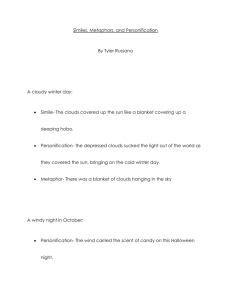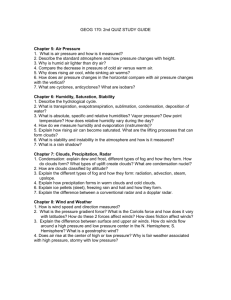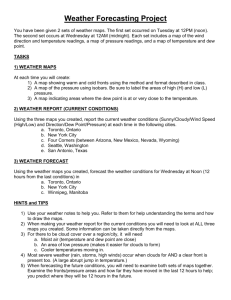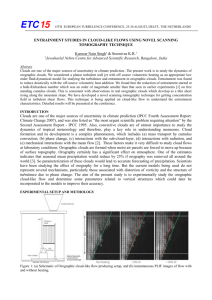Meteorology Test
advertisement
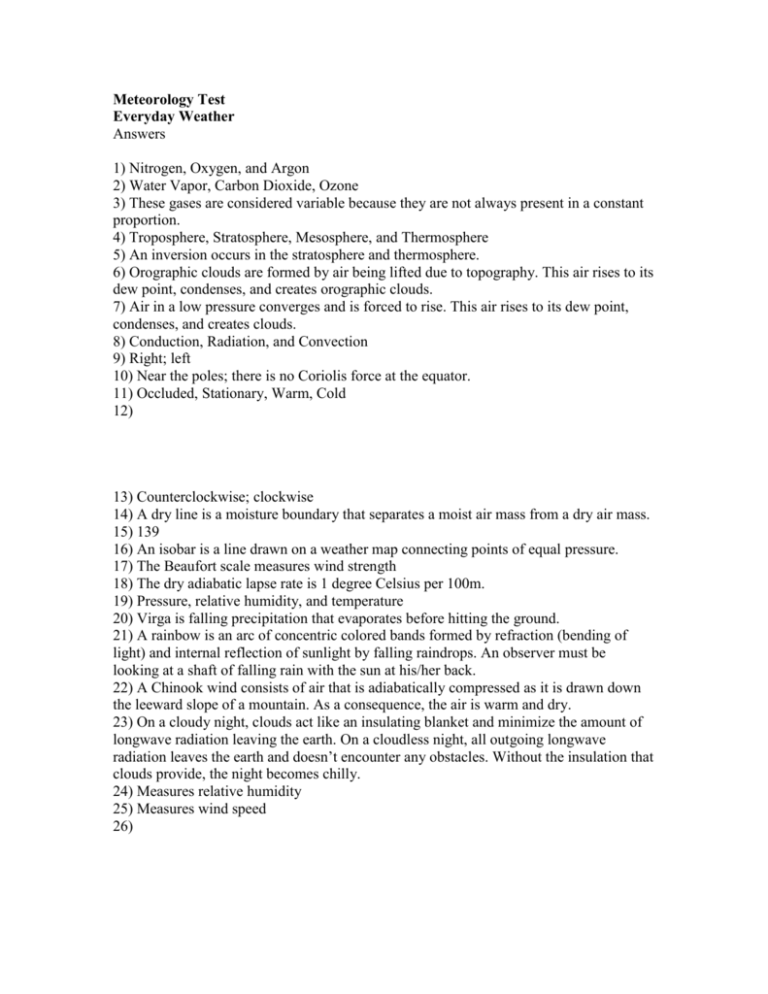
Meteorology Test Everyday Weather Answers 1) Nitrogen, Oxygen, and Argon 2) Water Vapor, Carbon Dioxide, Ozone 3) These gases are considered variable because they are not always present in a constant proportion. 4) Troposphere, Stratosphere, Mesosphere, and Thermosphere 5) An inversion occurs in the stratosphere and thermosphere. 6) Orographic clouds are formed by air being lifted due to topography. This air rises to its dew point, condenses, and creates orographic clouds. 7) Air in a low pressure converges and is forced to rise. This air rises to its dew point, condenses, and creates clouds. 8) Conduction, Radiation, and Convection 9) Right; left 10) Near the poles; there is no Coriolis force at the equator. 11) Occluded, Stationary, Warm, Cold 12) 13) Counterclockwise; clockwise 14) A dry line is a moisture boundary that separates a moist air mass from a dry air mass. 15) 139 16) An isobar is a line drawn on a weather map connecting points of equal pressure. 17) The Beaufort scale measures wind strength 18) The dry adiabatic lapse rate is 1 degree Celsius per 100m. 19) Pressure, relative humidity, and temperature 20) Virga is falling precipitation that evaporates before hitting the ground. 21) A rainbow is an arc of concentric colored bands formed by refraction (bending of light) and internal reflection of sunlight by falling raindrops. An observer must be looking at a shaft of falling rain with the sun at his/her back. 22) A Chinook wind consists of air that is adiabatically compressed as it is drawn down the leeward slope of a mountain. As a consequence, the air is warm and dry. 23) On a cloudy night, clouds act like an insulating blanket and minimize the amount of longwave radiation leaving the earth. On a cloudless night, all outgoing longwave radiation leaves the earth and doesn’t encounter any obstacles. Without the insulation that clouds provide, the night becomes chilly. 24) Measures relative humidity 25) Measures wind speed 26)






